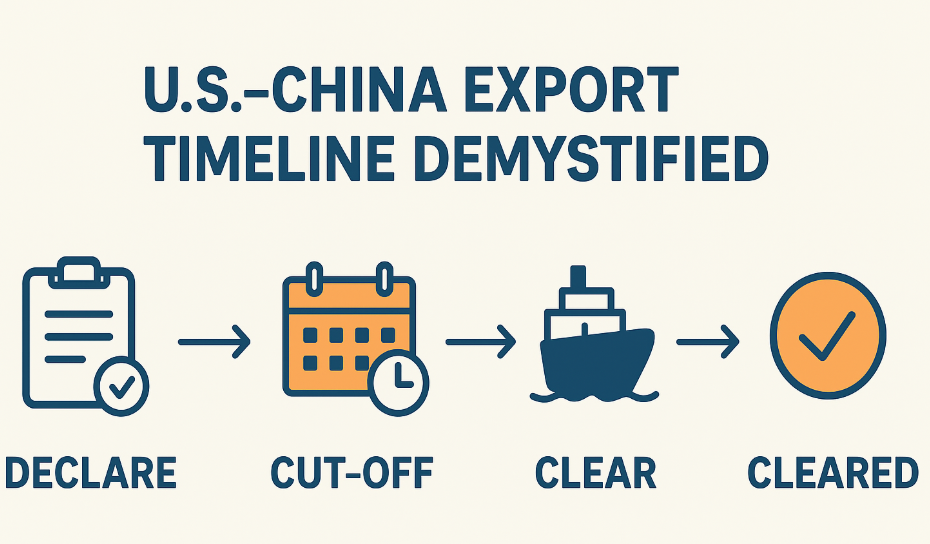Mastering Full Container Sea Freight from China to the US: A Comprehensive Guide
Release time:
2025-08-12
Navigating the complexities of full container sea freight from China to the US is crucial for businesses that rely on global supply chains. This shipping method offers significant advantages, including cost efficiency and the ability to transport large quantities of goods. Understanding the key elements involved in this process can help professionals optimize their logistics strategy.
First and foremost, it is essential to determine the type of container best suited for your cargo. Standard options include 20-foot and 40-foot containers, with 40-foot containers providing more space and accommodating larger shipments. Choosing the right container type not only affects shipping costs but also impacts the handling and storage of your goods upon arrival.
When planning your shipment, it is important to consider the transit times involved in full container sea freight. Shipping times can vary based on factors such as departure and arrival locations, port congestion, and customs clearance. On average, shipments from China to US ports can take anywhere from 15 to 30 days. Planning ahead and allowing for potential delays can help businesses maintain a smooth supply chain.
Customs clearance is another critical aspect to consider when exporting goods from China to the US. Ensuring compliance with both Chinese and US regulations will prevent costly delays. It is advisable to work with a freight forwarder or customs broker who can guide you through the necessary documentation, tariffs, and import regulations. Familiarizing yourself with the Harmonized System (HS) codes relevant to your goods will also streamline this process.
Furthermore, effective communication with your shipping partner is vital for a successful shipping experience. Ensure that you have clear agreements regarding responsibilities, timelines, and costs. Regular updates on the shipment's status can help you address any issues promptly and keep your stakeholders informed.
Lastly, leveraging technology can significantly enhance the efficiency of your logistics operations. Many freight forwarders offer tracking tools that allow you to monitor your shipment in real-time. This transparency not only improves decision-making but also enhances customer satisfaction by providing accurate delivery expectations.
In summary, mastering full container sea freight from China to the US requires careful planning, adherence to regulations, and effective communication. By understanding the nuances involved in this shipping method, professionals can optimize their logistics strategy and enhance their overall operational efficiency. Embracing these best practices will position your business for success in the competitive landscape of international trade.
First and foremost, it is essential to determine the type of container best suited for your cargo. Standard options include 20-foot and 40-foot containers, with 40-foot containers providing more space and accommodating larger shipments. Choosing the right container type not only affects shipping costs but also impacts the handling and storage of your goods upon arrival.
When planning your shipment, it is important to consider the transit times involved in full container sea freight. Shipping times can vary based on factors such as departure and arrival locations, port congestion, and customs clearance. On average, shipments from China to US ports can take anywhere from 15 to 30 days. Planning ahead and allowing for potential delays can help businesses maintain a smooth supply chain.
Customs clearance is another critical aspect to consider when exporting goods from China to the US. Ensuring compliance with both Chinese and US regulations will prevent costly delays. It is advisable to work with a freight forwarder or customs broker who can guide you through the necessary documentation, tariffs, and import regulations. Familiarizing yourself with the Harmonized System (HS) codes relevant to your goods will also streamline this process.
Furthermore, effective communication with your shipping partner is vital for a successful shipping experience. Ensure that you have clear agreements regarding responsibilities, timelines, and costs. Regular updates on the shipment's status can help you address any issues promptly and keep your stakeholders informed.
Lastly, leveraging technology can significantly enhance the efficiency of your logistics operations. Many freight forwarders offer tracking tools that allow you to monitor your shipment in real-time. This transparency not only improves decision-making but also enhances customer satisfaction by providing accurate delivery expectations.
In summary, mastering full container sea freight from China to the US requires careful planning, adherence to regulations, and effective communication. By understanding the nuances involved in this shipping method, professionals can optimize their logistics strategy and enhance their overall operational efficiency. Embracing these best practices will position your business for success in the competitive landscape of international trade.










